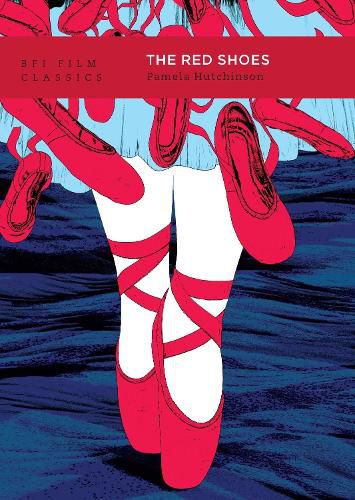Readings Newsletter
Become a Readings Member to make your shopping experience even easier.
Sign in or sign up for free!
You’re not far away from qualifying for FREE standard shipping within Australia
You’ve qualified for FREE standard shipping within Australia
The cart is loading…






Endlessly fascinating, dark and bright, The Red Shoes (1948) employs every branch of the cinematic arts to sweep the audience off its feet, invigorated by the transcendence of art itself, only to leave them with troubling questions. Representing the climax of Michael Powell and Emeric Pressburger's celebrated run of six exceptional feature films, the film remains a beloved, if unsettling and often divisive, classic.
Pamela Hutchinson's study of the film examines its breathtaking use of Technicolor, music, choreography, editing and art direction at the zenith of Powell and Pressburger's capacity for 'composed cinema'. Through a close reading of key scenes, particularly the film's famous extended ballet sequence, she considers the unconventional use of ballet as uncanny spectacle and the feminist implications of the central story of female sacrifice.
Hutchinson goes on to consider the film's lasting and wide-reaching influence, tracing its impact on the film musical genre and horror cinema, with filmmakers such as Joanna Hogg, Sally Potter, Martin Scorsese and Brian De Palma having cited the film as an inspiration.
$9.00 standard shipping within Australia
FREE standard shipping within Australia for orders over $100.00
Express & International shipping calculated at checkout
Endlessly fascinating, dark and bright, The Red Shoes (1948) employs every branch of the cinematic arts to sweep the audience off its feet, invigorated by the transcendence of art itself, only to leave them with troubling questions. Representing the climax of Michael Powell and Emeric Pressburger's celebrated run of six exceptional feature films, the film remains a beloved, if unsettling and often divisive, classic.
Pamela Hutchinson's study of the film examines its breathtaking use of Technicolor, music, choreography, editing and art direction at the zenith of Powell and Pressburger's capacity for 'composed cinema'. Through a close reading of key scenes, particularly the film's famous extended ballet sequence, she considers the unconventional use of ballet as uncanny spectacle and the feminist implications of the central story of female sacrifice.
Hutchinson goes on to consider the film's lasting and wide-reaching influence, tracing its impact on the film musical genre and horror cinema, with filmmakers such as Joanna Hogg, Sally Potter, Martin Scorsese and Brian De Palma having cited the film as an inspiration.